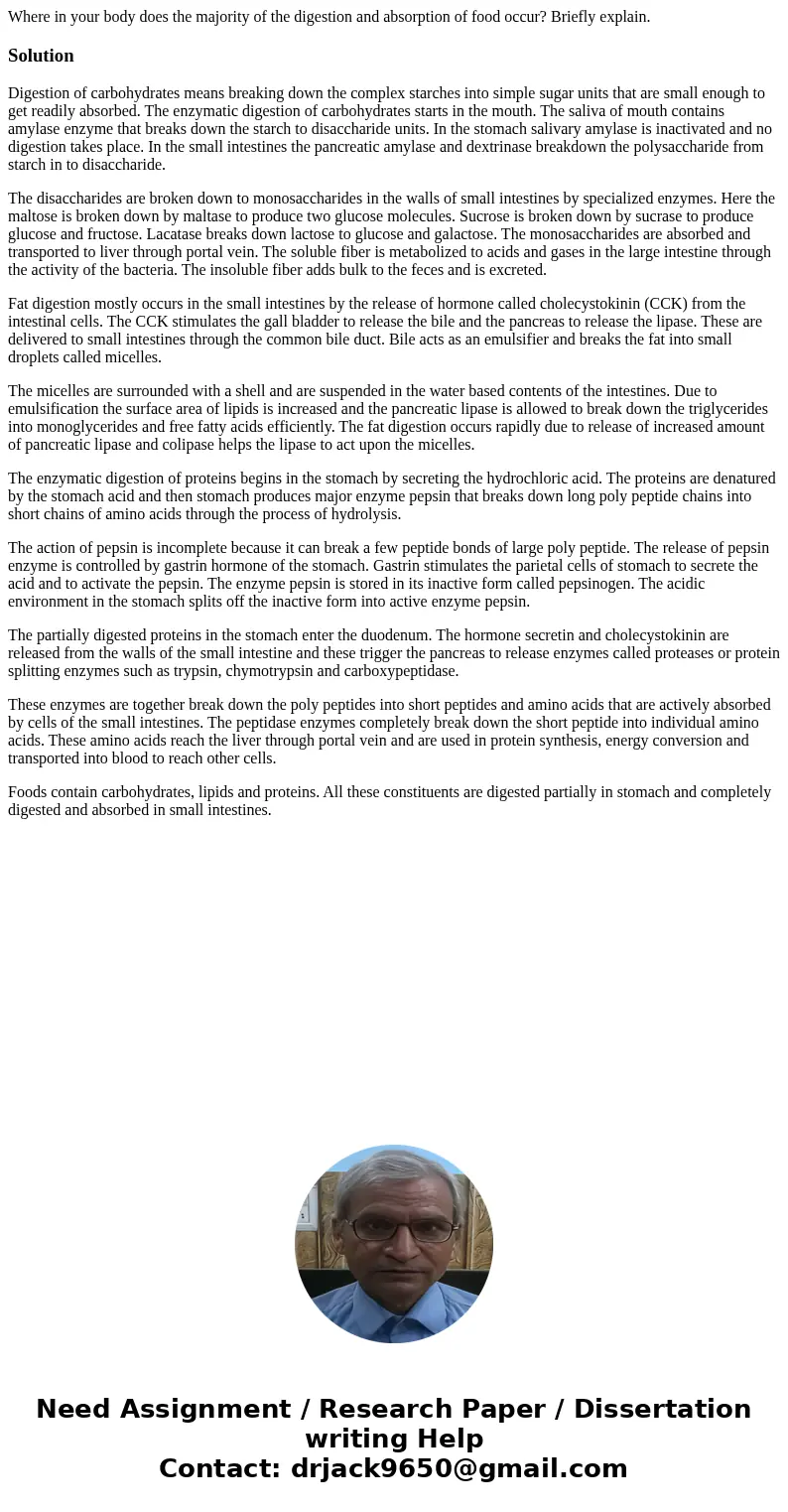Where in your body does the majority of the digestion and ab
Where in your body does the majority of the digestion and absorption of food occur? Briefly explain.
Solution
Digestion of carbohydrates means breaking down the complex starches into simple sugar units that are small enough to get readily absorbed. The enzymatic digestion of carbohydrates starts in the mouth. The saliva of mouth contains amylase enzyme that breaks down the starch to disaccharide units. In the stomach salivary amylase is inactivated and no digestion takes place. In the small intestines the pancreatic amylase and dextrinase breakdown the polysaccharide from starch in to disaccharide.
The disaccharides are broken down to monosaccharides in the walls of small intestines by specialized enzymes. Here the maltose is broken down by maltase to produce two glucose molecules. Sucrose is broken down by sucrase to produce glucose and fructose. Lacatase breaks down lactose to glucose and galactose. The monosaccharides are absorbed and transported to liver through portal vein. The soluble fiber is metabolized to acids and gases in the large intestine through the activity of the bacteria. The insoluble fiber adds bulk to the feces and is excreted.
Fat digestion mostly occurs in the small intestines by the release of hormone called cholecystokinin (CCK) from the intestinal cells. The CCK stimulates the gall bladder to release the bile and the pancreas to release the lipase. These are delivered to small intestines through the common bile duct. Bile acts as an emulsifier and breaks the fat into small droplets called micelles.
The micelles are surrounded with a shell and are suspended in the water based contents of the intestines. Due to emulsification the surface area of lipids is increased and the pancreatic lipase is allowed to break down the triglycerides into monoglycerides and free fatty acids efficiently. The fat digestion occurs rapidly due to release of increased amount of pancreatic lipase and colipase helps the lipase to act upon the micelles.
The enzymatic digestion of proteins begins in the stomach by secreting the hydrochloric acid. The proteins are denatured by the stomach acid and then stomach produces major enzyme pepsin that breaks down long poly peptide chains into short chains of amino acids through the process of hydrolysis.
The action of pepsin is incomplete because it can break a few peptide bonds of large poly peptide. The release of pepsin enzyme is controlled by gastrin hormone of the stomach. Gastrin stimulates the parietal cells of stomach to secrete the acid and to activate the pepsin. The enzyme pepsin is stored in its inactive form called pepsinogen. The acidic environment in the stomach splits off the inactive form into active enzyme pepsin.
The partially digested proteins in the stomach enter the duodenum. The hormone secretin and cholecystokinin are released from the walls of the small intestine and these trigger the pancreas to release enzymes called proteases or protein splitting enzymes such as trypsin, chymotrypsin and carboxypeptidase.
These enzymes are together break down the poly peptides into short peptides and amino acids that are actively absorbed by cells of the small intestines. The peptidase enzymes completely break down the short peptide into individual amino acids. These amino acids reach the liver through portal vein and are used in protein synthesis, energy conversion and transported into blood to reach other cells.
Foods contain carbohydrates, lipids and proteins. All these constituents are digested partially in stomach and completely digested and absorbed in small intestines.

 Homework Sourse
Homework Sourse